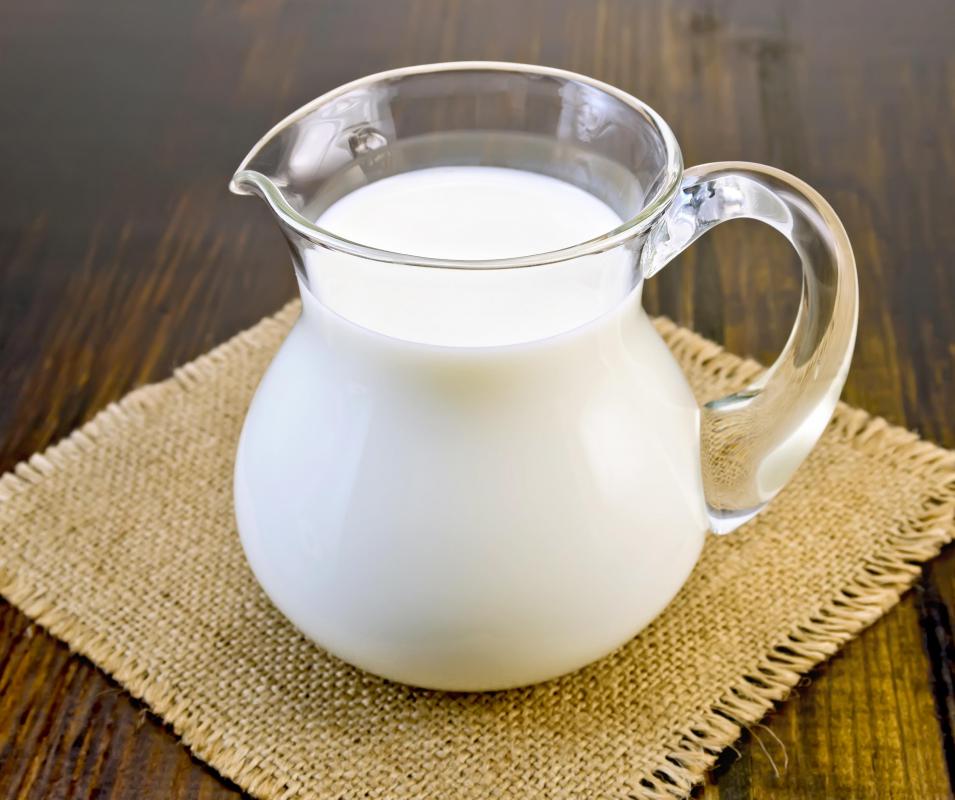At DelightedCooking, we're committed to delivering accurate, trustworthy information. Our expert-authored content is rigorously fact-checked and sourced from credible authorities. Discover how we uphold the highest standards in providing you with reliable knowledge.
What Is Fermented Cheese?
Fermented cheese is a food found around the world. The fermentation process allows dairy products to be kept at room temperature for long periods of time, which was essential in the days before refrigeration. Cheeses are fermented by adding different types of bacteria to dairy products and allowing the bacteria to eat the lactose. Both hard and soft cheeses are made by fermenting milk by adding live cultures to it.
There are two main types of cheese — fermented and non-fermented. Non-fermented cheeses are made by heating milk, adding an acid to it, which causes the curds and whey to separate, and then straining out the curds. These curds can be eaten while moist, such as in cottage cheese, or pressed until semi-dry and firm, such as in the Indian cheese, paneer. In either case, the cheese must be consumed quickly, or it will go bad. Fermented cheese was developed thousands of years ago as a way to make dairy products last for weeks or months.

The process of making a fermented cheese differs significantly from the process of making non-fermented cheese. Hard cheeses require the addition of renin or a renin substitute, and all fermented cheeses need live cultures added to them. These cultures feed on the lactose in the milk, producing lactic acid as a byproduct. This process is often called aging, but it is actually a type of fermentation. Cheeses can be fermented for anywhere from weeks to months.

Historically, cheese was fermented in caves. Caves provided an area that was cool, moist, and away from the sun, which could damage the fermented cheese and render it inedible. In some areas, cheeses are still aged in caves, though it is more common in modern times to ferment them in climate controlled buildings. The living organisms in the cheese need to be kept cool so that they will reproduce and ferment the milk into cheese.

Most cheeses are variations of fermented cheese. The cultures added to the cheese and the conditions under which it is aged account for the many different flavors and textures of cheese. All of the bacteria added to cheese to ferment are safe to consume. Unsafe bacteria are often removed from the milk prior to fermentation through the process of pasteurization.
AS FEATURED ON:
AS FEATURED ON:
















Discussion Comments
I have some confusion over fermented dairy because some sources define "fermented" as food with probiotics. If we take that definition, then cottage cheese can also be considered fermented.
But I think the correct definition of fermented is when bacteria and cultures are added to a milk product to make cheese. We're not talking about products that naturally contain probiotics, because most dairy already does.
So cottage cheese is not fermented.
@donasmrs-- Yes, feta is fermented. I think most hard cheeses are.
It's made like any other fermented cheese. Milk is boiled, cooled down slightly and cheese culture is added. Rennet is added later and left overnight. And then it is put in brine so that the cheese can age.
Feta is my favorite type of cheese. I like hard feta that has fermented for a long time. It has a very complex and rich flavor.
Is feta cheese a fermented cheese? How is it made?
Post your comments